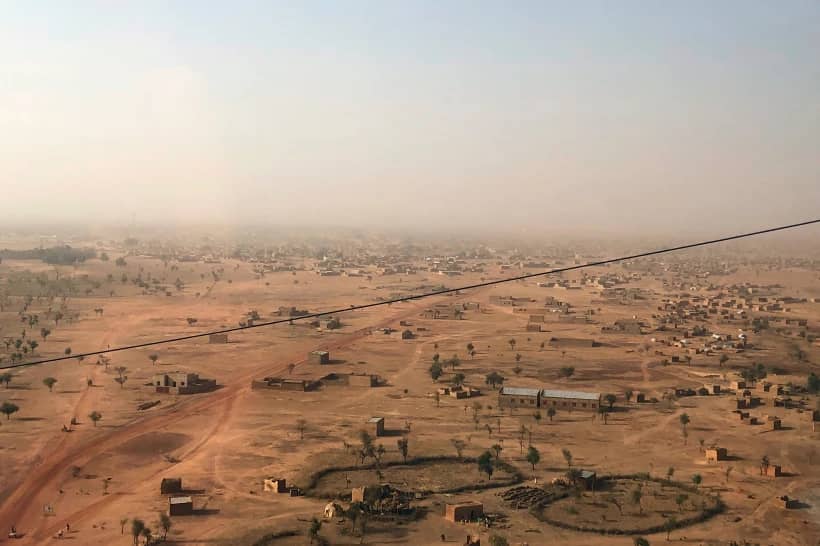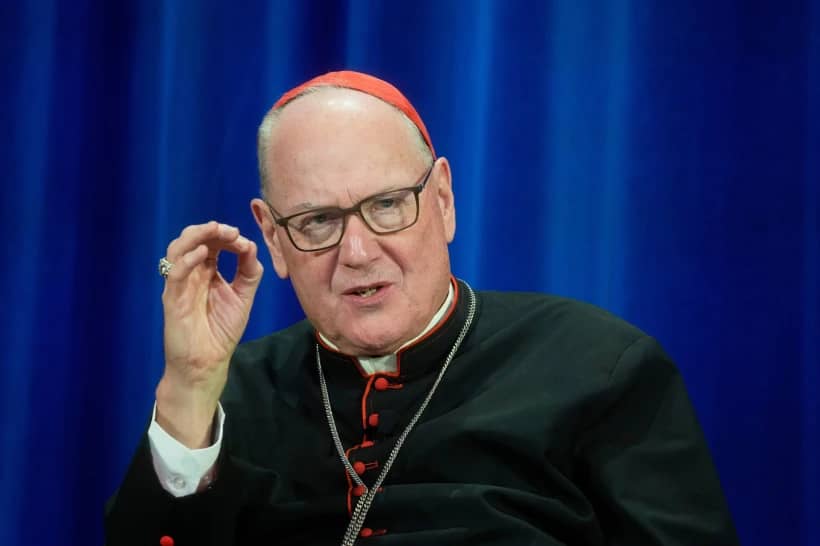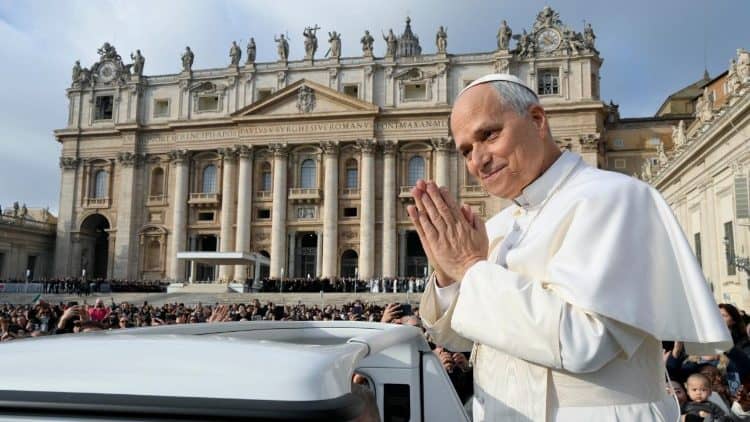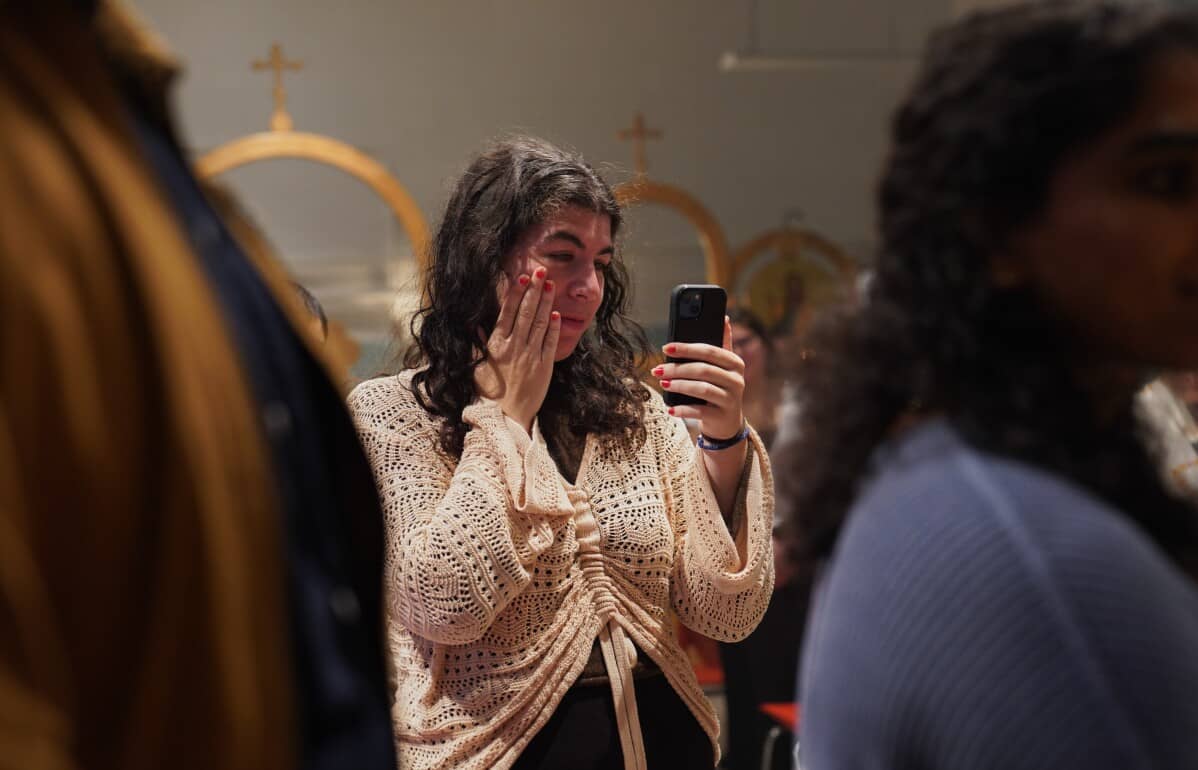ACI BONACCORSI, Sicily — Aci Bonaccorsi, a small town of about 3,500 on the Italian island of Sicily, is a pious and devout kind of place.
People are said to have been miraculously cured here, citizens swear to have seen demons cast out, and once, it is believed, the Virgin Mary stopped a river of lava from destroying the entire town.
But today the small Sicilian municipality, famous for being a bastion of the kind of traditional Catholicism that characterizes the surrounding diocese of Acireale, is in the eye of a hurricane involving exorcisms, alleged sexual abuse and power struggles.
In the 1970s, the town’s religious fervor lent itself well to the wave of charismatic renewal that swept over southern Italy, and soon Aci Bonaccorsi became a hub for those believed they had received gifts from the Spirit. It was during this upsurge of zealous evangelization, in the wake of Vatican II, that a lay Catholic group led by an unofficial exorcist slowly acquired influence and numbers, built powerful connections, and progressively distanced itself from Church orthodoxy and control.
Within the movement, which would later be known as the Catholic Culture and Environment Association or ‘ACCA,’ a young former banker managed to create a pyramidal structure with him at the top, a self-proclaimed ‘Archangel’ who professed to cure the sick and to speak to God, and today is in jail, charged with sexually abusing at least six underage girls.
RELATED: Self-proclaimed ‘Archangel’ arrested for sex abuse in Sicily
The events that led up to the rise of ACCA, and its precipitous fall, include a violent fistfight in a church, a dramatic intervention by the local bishop that went awry, and secret exchanges of raunchy text messages. All occurred over the span of 40 years, when the association was able to operate for the most part without reprimand or ecclesiastical oversight.
Rose petals and exorcisms
Father Stefano Cavalli was considered himself a ‘spiritual son’ of St. Padre Pio, the 20th century Italian Capuchin monk famous for his miraculous powers and for having received the stigmata, the wounds that Jesus endured during the Passion, on his hands and feet.
According to a parishioner of the Lavina church in Aci Bonaccorsi with knowledge of the events surrounding ACCA, identified here as “Bianco” in accord with his request to protect his identity, Cavalli was particularly interested in the miraculous abilities of the Capuchin saint, especially his powers of bi-location, meaning his reported ability to be in two places at the same time. Cavalli also expressed a keen interest in exorcism, which he began practicing without authorization from ecclesiastical authorities.
“Father Cavalli was a good and humble man,” Bianco said looking down at black-and-white pictures of himself and Cavalli together on a spiritual retreat in 1969. “He liked to refer to a special twinship between the Church in Lavina and Padre Pio.”
Cavalli founded the ‘Group of Lavina’ in 1974, and for a while things were going well. The town of Aci Bonaccorsi is part of a cluster of towns, which include Aci Sant’Antonio and Viagrande, with the church of Lavina smack in the middle. Not only did citizens from the three nearby towns meet every Sunday for Mass together, but people also came from the cities of Catania Syracuse, and Acireale.

In 1973, Mamma Mimma, a woman who allegedly had rose petals fall out of her mouth and could cure people though the Spirit, came to the parish and quickly became a fixture. Her presence led many faithful and curious alike to come and see firsthand the ‘strange happenings’ in the church of Lavina.
Thanks to the increasing popularity of the site, Cavalli renewed the church in the 1990s, adding a sanctuary made from volcanic lava in honor of the Virgin Mary. The cavernous side chapel included a corridor and an indoor stream of holy water that pilgrims would use to purify themselves. A statue of Padre Pio points toward the end of the corridor, where a replica of the image of baby Jesus in Bethlehem lies in a niche.
The evocative scene added to the mysticism and religious allure of Aci Bonaccorsi. From far and wide, people continued to come.

The arrival of the ‘foreigner’ Capuana
The arrival of Pietro Alfio Capuana, who today stands accused of sexually abusing at least six underage girls by using a mixture of persuasion and coercion, marked a turning point for the community.
Townsfolk describe the young Capuana, a “foreigner” who came to the town from a suburb on the outskirts of Syracuse, circling around town on his motorcycle and picking up young girls, between the age of 16 and 18, and taking them off to secluded areas.
“Those were different times,” Bianco told Crux. “To be alone with a girl, you would go to offhand places. When I went to such places with my future wife, I would often find Capuana there with different girls.”
This behavior continued although Capuana was married to Giusy Ferrera, with whom he had a son, and lived with her even after their legal separation. This is possible under Italian law, which allows separated spouses to live together provided there are separate bathrooms.
Bianco’s account of Capuana’s activity was confirmed by another parishioner, who also asked to remain anonymous.

Capuana got a job at a local bank in Aci Bonaccorsi as a cashier and was present during an armed robbery, which, according to some current members of the lay group, deeply shook him.
After being sent away from a parish in the town of Acitrezza, Capuana approached Cavalli, who found potential in the young man in search of spiritual guidance. Hence began the quick ascension of Capuana within the ‘Group of Lavina,’ and, in parallel with its religious practices, his presence drove it further and further away from the official Church orbit.
Capuana began claiming that he was the Archangel Michael, assisted by two other Archangels Raphael and Gabriel (respectively, local journalist Carmelo di Mauro and musician Giuseppe Rapisardi). The three allegedly would meet in the cigarette-smoke filled rectory after regular hours, dressed in religious clothing and each carrying a cross. Faithful would gather round and listen, as Capuana spoke with an otherworldly voice and foretold things to come.
These meetings adopted the name of the ‘Cenacle,’ and reportedly would extend well into the night. Yells, locals say, could be heard from outside church grounds on the days Cavalli and his Archangels performed exorcisms.
Many tried to warn Cavalli of the danger of associating the group with such an oblique figure as Capuana, but to no avail. Among them was also Bianco, who told Crux the parish priest was blind when it came to his lay protégé, and this led to a rift between Bianco and Cavalli.
Tired of the “foreigners” who had invaded the church and led it astray from Catholic doctrine, some parishioners turned to the local bishop of Acireale, who at the time was Bishop Pasquale Bacile.
This sparked a power struggle between parishioners and the lay group, and began a series of events that offers the most detailed information regarding what actually happened within the ‘Group of Lavina.’

The Diocese of Acireale intervenes
By 1978, Bacile had been the bishop of Acireale for 14 years, was near retirement, and was suffering from a severe illness that made movements extremely difficult, forcing him to delegate a large part of his responsibilities to his auxiliary bishop.
Giuseppe Costanzo, his auxiliary bishop, was a learned and devout man who had studied theology and Biblical studies at the Gregorian University and then at the Pontifical Biblical Institute in Rome. He dutifully pursued his responsibility of trying to bring the lay group back in line.
RELATED: Amid Italian abuse scandal, question remains of Church oversight
After several admonitions failed, Costanzo brought the hammer down with a letter, signed by Bacile, sent to Cavalli and dated February 2, 1976.
“In order to avoid the recurrence of much complained-about disorders, the group of the ‘Cenacle’ that exists in the Lavina parish must be considered disbanded by all ecclesiastical means,” the letter said.
“If, while disobeying this disposition, its members still organize meetings or activities, the parish priest must not have any more relations with the group, nor, furthermore, participate or allow them to use the parochial property (church, the rectory, other chambers).”
The letter also prohibited the Lavina parish from instituting other charismatic groups.
The following are other interdictions against the ‘Group of Lavina’ issued by the bishop though his auxiliary.
- The parish priest “is formally prohibited from performing exorcisms on anyone, and from giving blessings that may be considered substitutive of exorcisms. We remind the parish priest that the bishop never gave him this faculty, which he has therefore performed illegally.”
- “During the celebration of the Eucharist and the sacraments, liturgical norms must be strictly followed. During their performance as well as during their opening and closing, lay people will not be allowed to recite prayers, invocations or other interventions that exude those required by the same celebration, and therefore Biblical readings and Prayers of the Faithful [must be] according to the approved form. The use of special clothing, except for the [priest’s] cassock and the surplice, is prohibited.”
- “The Church must be closed after the celebration of the Vespers, and no more than one hour after the Hail Mary. After such hours, confessions must be suspended.”
- “All the material of the ‘Cenacle’ group in the hands of the parish priest or kept in the parochial archive (registrations, photocopies etc.) must be handed to the bishop.”
The bishop also prohibited Cavalli from organizing pilgrimages and outings; participating in activities regarding welfare and medical assistance, such as hospitals and clinics; and offering the Eucharist in private homes.
The letter insisted that Cavalli return to addressing already-existing groups of young people and children, in accordance with the programs of Azione Cattolica (a widespread Italian lay movement in harmony with the Catholic Church) and the diocese.
The document shows the alleged unorthodox practices that left local parishioners aghast and indignant were also acknowledged by the diocese, and sufficient to call for forceful measures in order to try to suppress them.

Punches in the rectory and explosive threats
The Group of Lavina paid little to no heed. Members continued to meet in the church well into the night, and Cavalli even refurbished his home to make room for other allegedly “bizarre happenings,” as local newspapers at the time reported.
On July 3, 1978, a violent fistfight broke between parishioners and the ‘foreigners’ of the lay group in the Lavina church. While faithful were praying the rosary, members of the ‘Group of Lavina’ began singing a traditional Italian song in the nearby rectory while performing other “rites,” angering the parishioners.
Cavalli was brought in to mediate, but soon insults between the factions flew and then fists, which grew so violent and reached “such proportions” that the police were called to intervene. Once more, Costanzo stepped in to impose further rules and sanctions on the group.
RELATED: Canonist warns Church oversight of troubled lay groups has ‘no teeth’

Capuana appears in local newspapers ten days later, July 13, in an article reporting on a meeting organized between the opposing factions at the parish in the Bagarè Theatre of the church.
The room “was riled up when a young man, a certain Pietro, openly challenged before the assembly those who had something to say about his actions – actions according to Pietro – that were made out of fraternal love toward his brothers in the community,” an article by Paolo Licciarello for La Sicilia reads.
Immediately, Capuana was confronted by accusations from the parishioners. A young man, Mario, accused the group of performing unauthorized exorcisms, and a girl told of a brother who was in shock after witnessing such practices.
“You had the audacity to tell me that my husband was hit by a heart attack because God punished him, after I prohibited my children from frequenting your group!” a woman yelled, according to the article.
Meanwhile, Costanzo peacefully watched from a corner, and, when the conversation risked taking another violent turn, he spoke against the group.
“I exhort you to avoid all these things,” he said. “The Devil, when he appears, must be driven away, with fasting, humility and prayer. It’s not a competence of the faithful to exorcize people.”
The auxiliary then repeated the admonitions from the bishop, and concluded his speech by adding, “Do not fall into the error of considering yourself the same as Christ, the prophets, or other saints.”
In the same year, Cavalli was sent away by the diocese to the Sicilian beach town of Fiumefreddo, where he remained for four months. The local parishioners appeared to have won.
Crux reached out to the now-emeritus Archbishop of Syracuse, Costanzo, who didn’t want to speak of those events 40 years ago.
“I did what, at the time, my conscience called me to do,” he said. “I paid the price, with kilos of TNT!” He was apparently referring to a bomb threat he had received, and citizens of Aci Bonaccorsi said that for a while, Costanzo was accompanied by an escort of students and faithful to safeguard him. (An investigation of that threat, however, did not establish any connection with the ACCA or its members.)
In January of 1979, Costanzo, who, by custom, might have been appointed Bishop of Acireale after Bacile’s retirement, was sent away to become the General Assistant of Azione Cattolica, where he remained until 1982. After that, he was appointed bishop of the town of Nola in the Campagna region in Italy, plagued by the local ‘Ndrangheta mafia syndicate against which he fought tirelessly, until he was appointed Archbishop of Syracuse in September 1989.
The movement resurrected
In the 1980s, the ‘Group of Lavina’ resurrected itself under the name of Catholic Culture and Environment Association or ACCA, though, as Bianco put it, “it was always clearly there.” In fact, observers say it continued to hold meetings at the parish during the entire span, and kept doing so until charges were filed against Capuana in February.
The association is legally registered as civil entity, not ecclesiastical, and Capuana became its official head while Cavalli was reduced to a distant adjunct figure.
The four bishops who succeeded Bacile in Acireale did not issue any further restrictions or public denunciations of ACCA, appearing largely content to wash their hands of it because one of their priests was no longer at least theoretically in charge.
The group continued to gather power and influence over the community and its local institutions for 40 years, reaching nearly 5,000 followers. Capuana remained alone after a rift with the other two ‘Archangels,’ and became the undisputed leader.
In February 2017, a concerned mother discovered text messages between her underage daughter and another girl discussing sexual abuses suffered at the hands of Capuana. She brought the issue to the Italian Postal Police, which began an operation called ’12 Apostles’ looking into the accusations.
Results of the investigation allege that the ‘Archangel’ orchestrated an elaborate system that involved young female members of ACCA taking “turns” to satisfy him sexually. Police believe he was aided by a group of “Apostles,” who would begin a persistent process of indoctrination of the girls, telling them the devil would take them over if they didn’t comply.
Reportedly, underage victims were made to write love letters to Capuana, begging him to love them and have intercourse with them, and were also forced to take anti-conception pills. In one case, a girl allegedly was forced to take the day-after pill in order to end a pregnancy.
According to police documents, the ages of the girls ranged from 11 to 16.
Capuana, now 73, was arrested August 2 and is currently in prison. Three of his female ‘Apostles’ are under house arrest.
One question that remains unanswered is how the lay group managed to remain essentially immune from oversight, either by local ecclesiastic powers or government authorities.
A hint may come in the police pre-trial detention order for Capuana, which states that a mother of an abuse victim once paid a visit to Bishop Pio Vittorio Vigo, who governed Acireale from 2002 to 2011, to denounce the goings-on in the group.
RELATED: Police report paints damning picture of ‘Archangel’ charged with abuse
According to the detention order, she told police that Vigo acknowledged having known about the abuses for over 30 years to her, but said to her that “Capuana … [is] protected by strong powers,” which the bishop did not specify.
Crux will attempt to unpack what those “powers” may have been, and other developing aspects of the story, in a future report.
Ignazio de Luca, a Sicilian reporter for the online Italian news outlet LaSpiaPress, contributed to this story. Artwork is by Claire Giangravè.

















